









![]()
Few stories in English folklore have had the staying power of King Arthur and his Knights of the Round Table. While many people are familiar with the legend, few people realize how many different versions of the story actually exist. Pop culture today portrays the Knights of the Round Table as a close-knit group of legendary knights loyal to their king. However, in reality, depictions of the knights vary wildly depending on the version. For anyone interested in learning more, it can all be a little daunting.
The Knights of the Round Table first appeared in literature in the mid-12th century. The knights were supposedly brought together by the legendary King Arthur shortly after he ascended to the throne. The order’s purpose was to help keep the peace during the turbulent early years of the young king’s reign.
Later on in the legend, the knights were given the holy task of hunting down the Holy Grail. In the reporting, this quest is usually completed just before the order falls. Many of the knights went on to appear in their own works of chivalric romance .
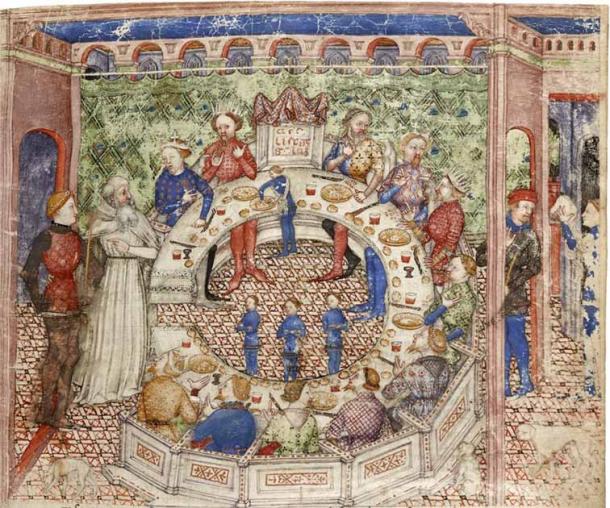
Sir Galahad is introduced to King Arthur’s knights, gathered at the Round Table. This illustration is from The Quest for the Holy Grail and the Death of Arthur, attributed to Gautier Map. ( Public Domain )
The round table that they all sat at was a symbol of equality. The knights ranged from sovereign royals in their own right to low-level nobles. Not all the knights were even English. Some hailed from other countries within Europe, and some were relatives of the king, such as Agravin and Gaheries. Others were former enemies who Arthur had charmed into joining him, such as Galehut and Lot.
No matter where they came from, or who they had been before joining Arthur’s knightly brotherhood, there was one constant. When they sat at the round table they were all of equal standing. 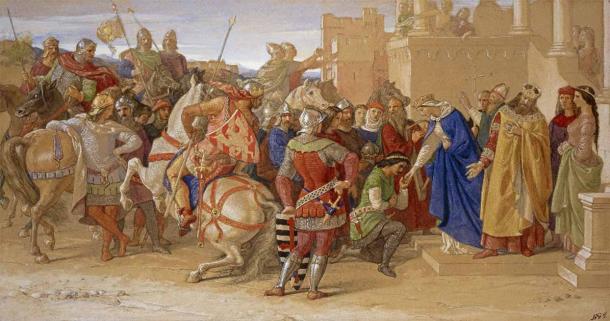
Piety: The Knights of the Round Table about to Depart in Quest of the Holy Grail, William Dyce, 1849 (Scottish National Gallery / Public Domain )
In modern pop culture, the table is often portrayed as being relatively small, with perhaps only 12 or so knights sitting at it. In fact, the number of Knights of the Round Table varies massively depending on the version being read.
Some writers put the number at a dozen, while others, such as 12th century English poet Layamon, put it closer to 1,600! Most versions settled at a slightly more manageable 100-300 knights. One seat was usually left empty. This chair was reserved by Merlin, Arthur’s mage and advisor, for the knight who would one day help them find the Holy Grail .
The membership was not static. Over the course of the legends, many of the knights were depicted as bravely falling in battle, only to be replaced by a new knight. As such, there is no definite answer as to how many knights there were, and it is next to impossible to cover all of them.
King Arthur’s knights, gathered at the Round Table to celebrate Pentecost, see a vision of the Holy Grail. The Grail appears as a veiled ciborium, made of gold and decorated with jewels, held by two angels. From a 12th century manuscript ( Public Domain )
No knight is more central to the tale of the Knights of the Round Table than Sir Lancelot . Lancelot was the orphaned son of King Ban of Benwick (Arthurian legend is full of unknown kingdoms). It was said that Lancelot was raised by fairies after the death of his parents.
Lancelot was essentially the ultimate knight. Of all the knights, he was the most gifted swordsman and jouster. The women of King Arthur’s court all adored the wise, charming, and noble Lancelot.
Lancelot was the father of another notable knight, Galahad, whom he fathered with Elaine. Unfortunately, this is where the cracks in Lancelot’s legend begin to show. Elaine died of a broken heart, for as much as she adored Lancelot, he never returned her love.
Lancelot was in love with King Arthur’s wife, Guinevere, who it turns out returned the handsome knight’s affections. Despite the fact that Lancelot had been Arthur’s most loyal knight and right-hand man, Lancelot and Guinevere had an affair. In most versions of the legend, this affair directly leads to the end of the knights, which we will come to later. 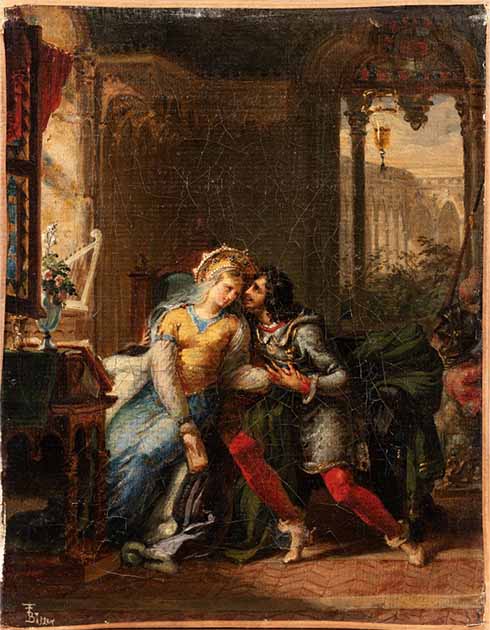
The affair that collapsed Camelot. Lancelot and Guinevere, by French painter Bitter, circa 1814 ( Public Domain )
Sir Mordred
Sir Mordred is the only member of the Knights of the Round Table who is consistently portrayed in a negative light. Ultimately, Mordred, along with King Arthur’s half-sister Morgan Le Fey , acted as the king’s ultimate nemesis.
Mordred seized control of Camelot while Arthur was distracted by Lancelot and Guinevere’s betrayal. The situation climaxed at the Battle of Camlann, where Mordred and the mighty King Arthur mortally wounded each other.
Despite the important role he plays in King Arthur’s downfall, very little is known about Mordred. While he is usually depicted as a villain and fallen member of the Knights of the Round Table, his origin tale varies vastly from version to version.
Sometimes he is depicted as King Arthur’s power-hungry nephew. Sometimes he is the brother of Sir Gawain. Most often, he is the son of King Arthur himself. Disturbingly, he is sometimes said to be the bastard son of Arthur and his half-sister Morgase, the full sister of Arthur’s nemesis Morgan le Fey. 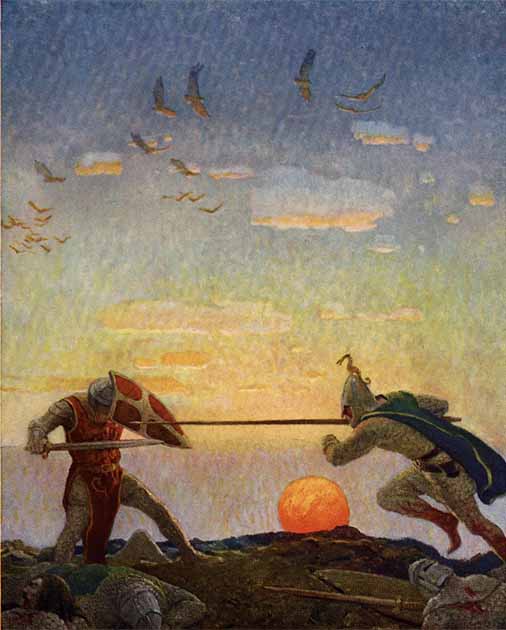
The greatest tragedy of the Knights of the Round Table: the deaths of King Arthur and Mordred at the Battle of Camlann. “Then the king ran towards Sir Mordred, crying, ‘Traitor, now is thy death day come!’, N. C. Wyeth illustration for Sidney Lanier’s The Boy’s King Arthur (1922) ( Public Domain )
Sir Galahad
Sir Galahad was the illegitimate son of Sir Lancelot and Elaine, Lady of Corbenic. Sir Galahad was essentially a new and improved Lancelot. He had all of his father’s strengths, but lacked his weaknesses.
Sir Galahad was a later addition to the legends surrounding King Arthur. This means he is missing in many of the earlier tales, and despite the important role he plays at the end of the legend, Sir Galahad is often overlooked.
Sir Galahad was the hero that finally managed to find the Holy Grail that King Arthur and his knights had been seeking for so long. Sir Galahad is most often associated with his purity of spirit. In many ways, he served as a parallel to Arthur. His story, as an illegitimate son rising from nothing and emerging as first among his peers, echoed that of Arthur.
Sir Galahad is, then, the ultimate Knight of the Round Table – a combination of both King Arthur and Sir Lancelot, but without their fatal flaws. Compared to most of Arthur’s knights, he is much more entwined with Christian imagery, serving as a kind of early Christian superhero. 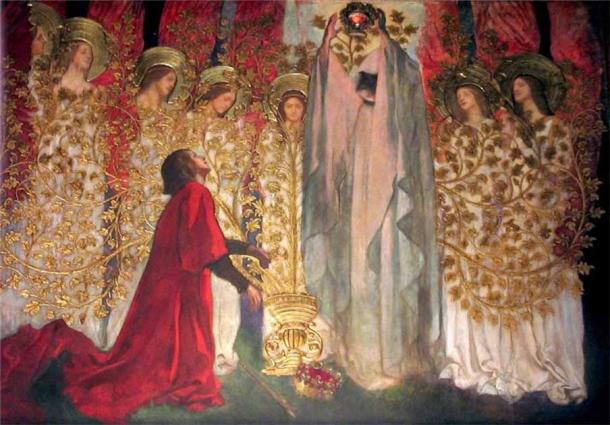
Often portrayed as the noblest Knight of the Round Table, Sir Galahad discovered the Grail in Arthurian legend. 1895 painting by Edwin Austin Abbey ( Public Domain )
Sir Perceval
Sir Perceval , sometimes known as Sir Peredur, was the first knight to quest for the Holy Grail. As such, his depiction is closely related to that of his ultimate superior, Sir Galahad.
Perceval follows the same template as many of King Arthur’s dominant knights. He was born of noble birth, but raised in secret. Upon first arriving at Camelot, he was mocked. Through his quest to find the Holy Grail, he proved himself worthy and was eventually allowed to join the Knights of the Round Table.
Sir Perceval was the first knight to reach the castle where the grail rested. Unfortunately, when given his task for entry, he did not understand what it was he had to do. He failed to heal the Fisher King, the last in a long line of English kings tasked with protecting the grail. Most versions of Perceval’s story end with him leaving the castle and never completing his quest. 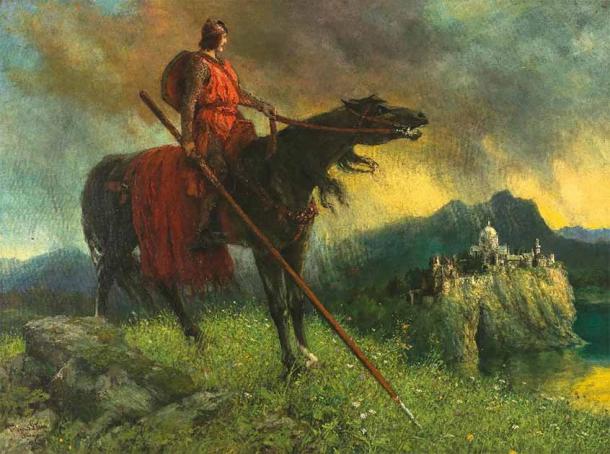
Sir Perceval on the Way to the Grail Castle. According to legend, Perceval was one of three Knights of the Round Table to discover the Holy Grail. ( Public Domain )
Sir Bors
In Arthurian legend, there were two Sir Bors, a father and a son. The elder Sir Bors was one of the first Knights of the Round Table and an early ally of King Arthur. With his help, King Arthur managed to beat the Saxons and achieve the peace that allowed his Camelot to flourish.
His son, also called Sir Bors, had a more complicated relationship with the king. The younger Sir Bors was one of the three Holy Grail knights, the others being Galahad and Perceval. Unlike the other two, however, Sir Bors was the only one of the three knights to survive their quest.
He returned just in time for the conflict between Sir Lancelot and King Arthur. Sir Bors was the cousin of Lancelot, and took his side.
In versions of the tale where Lancelot died, Sir Bors was left bereft and left Camelot. He returned to the Holy Land, where he died fighting in the Crusades. Other versions saw him become a king of Frankish lands in Europe.
He also featured in a tale where he was the father of Elyan the White, Emperor of Constantinople. Sir Bors was said to be a chaste knight, having forsworn sex and taken a vow of purity. The daughter of King Brandegoris fell in love with him, however. She used a magic ring to seduce him and make him fall in love with her, causing him to break his vow and father the future emperor. 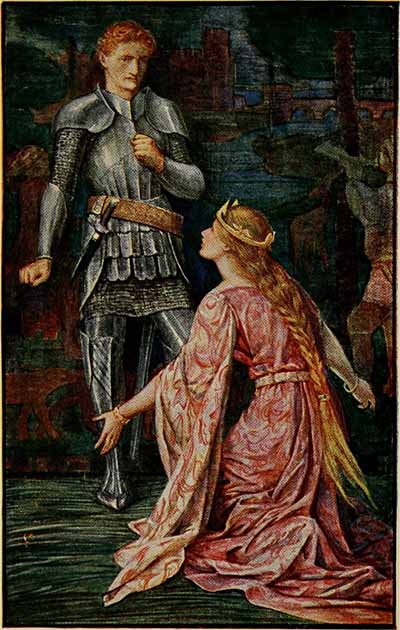
Guinevere & Sir Bors, Henry Justice Ford’s illustration for Andrew Lang’s Tales of the Round Table, 1908 ( Public Domain )
Out of all of King Arthur’s primary knights, Sir Gawain is both the oddest and the one whose depiction changed the most over time. Gawain was originally an individual figure set apart from the stories of Arthur and his table. He first appeared in his own Welsh myths before being inserted into the mythology of King Arthur and the Knights of the Round Table.
The most famous depiction of Gawain is Sir Gawain and the Green Knight . This story described Gawain taking part in a duel at King Arthur’s court. He bested his mysterious opponent, beheading him. Strangely, the knight survived his beheading, and Sir Gawain made an oath to receive a similar blow in one year’s time. The rest of the poem follows Sir Gawain as he journeyed to the mysterious Green Knight’s chapel the following year, having adventures on his way.
For a period, Sir Gawain was depicted as the knightly ideal and Arthur’s closest friend. Over time, however, he was replaced by Lancelot and then Galahad. His deeply pagan roots in Wales led Christian authors to depict him as a sinful brute. He eventually fell to Sir Lancelot’s sword during Lancelot’s rescue of Guinevere. 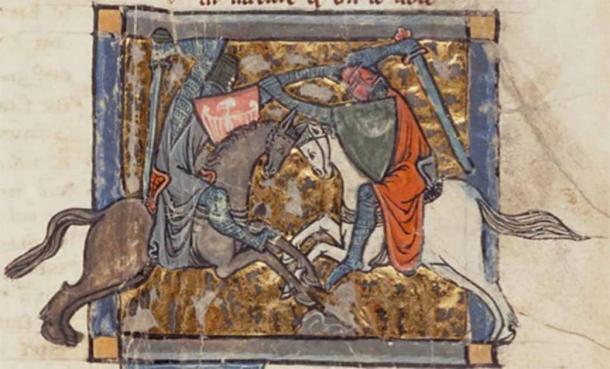
Yvain fighting Gawain in order to regain the love of his lady Laudine. Medieval illumination from Chrétien de Troyes’s 12th century romance, Yvain, le Chevalier au Lion ( Public Domain )
How the order ended depends, again, on the version of the legend that one is reading. In most versions of the tale, the order of the Knights of the Round Table came to a somewhat tragic end.
The once close bond between the knights was shattered following the revelation of Sir Lancelot’s betrayal of the King Arthur and his affair with Queen Guinevere. The Knights pf the Round Table split up into warring factions, and most of them ended up dead.
King Arthur, after discovering the affair, ordered Guinevere’s execution, demanding that she be burnt at the stake. Lancelot came to her rescue, but in doing so, accidentally killed two of his brothers-in-arms. In the ensuing chaos, many of their knights lost their lives. Some were killed by Lancelot, and some by Arthur’s treacherous son, Mordred, during the legend’s climactic final battle.
When the dust of this battle settled, and Arthur and his son Mordred lay dead, most versions state that all of the knights have finally perished. Some versions of the tale have Lancelot surviving the final battle and living the rest of his life as a hermit. Either way, Camelot falls shortly afterward, having been left defenseless.
It is clear when reading the original legends that depictions of King Arthur and his Knights of the Round Table changed drastically over the years. Originally portrayed as the ultimate chivalric heroes, years of revisionism turned them into something very different. Later versions depicted the Knights of the Round Table as more complex and flawed heroes. These became cautionary tales, where most of the knights met untimely ends.
The story of King Arthur and his Knights of the Round Table is ultimately a tragic one. Arthur and his loyal knights set out to create the ultimate kingdom, a utopia, but one by one, they all ultimately fell to their fatal flaws, and Camelot was destroyed.
Today, the legend lives on. Pop culture has done wonders in reviving the reputations of King Arthur and his knights. They appear in everything from movies to video games. They are often depicted as the ultimate knightly heroes.
Top image: Medieval Knight. Many of the Knights of the Round Table were fated to an early death. Source: Tony Marturano / Adobe Stock
By Robbie Mitchell
Jarus, O. April 11, 2018. Camelot, King Arthur & the Knights of the Round Table . Live Science. Available at: https://www.livescience.com/28992-camelot.html
Putter, A. October 22, 2020. Who were the Knights of the Round Table in Arthurian legend, and where does the Holy Grail fit in? History Extra. Available at: https://www.historyextra.com/period/medieval/knights-round-table-arthurian-legend-holy-grail/
De Troyes, C. 2015. The Complete Story of the Grail: Chrétien de Troyes’ Perceval and Its Continuations . (N. Bryant., translator) D.S Brewer. Cambridge. Available at: https://books.google.com.tr/books?id=z0PoCQAAQBAJ&pg=PA555&redir_esc=y#v=onepage&q&f=false
I’m a graduate of History and Literature from The University of Manchester in England and a total history geek. Since a young age, I’ve been obsessed with history. The weirder the better. I spend my days working as a freelance… Read More

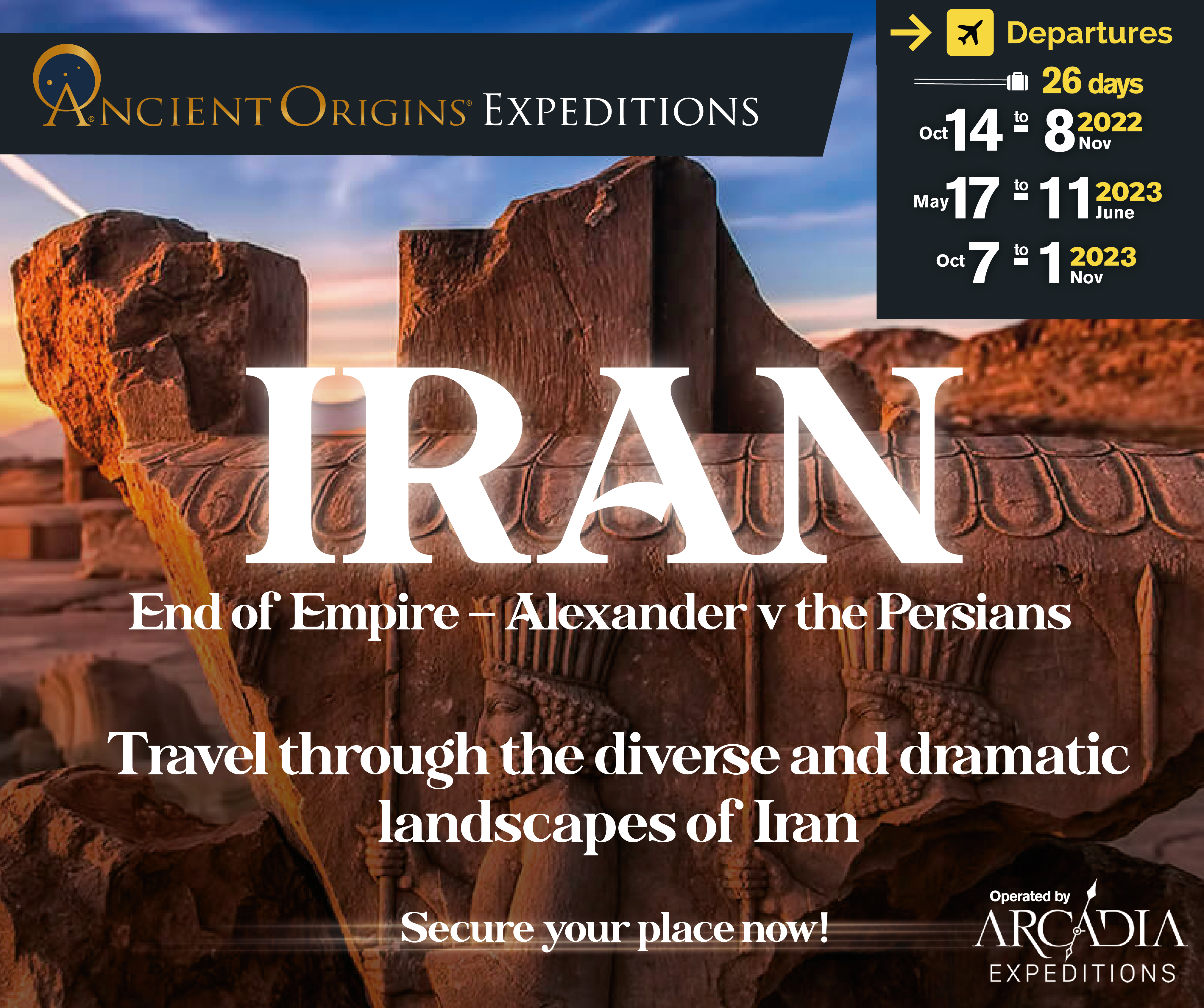







Ancient Origins has been quoted by:
At Ancient Origins, we believe that one of the most important fields of knowledge we can pursue as human beings is our beginnings. And while some people may seem content with the story as it stands, our view is that there exist countless mysteries, scientific anomalies and surprising artifacts that have yet to be discovered and explained.
The goal of Ancient Origins is to highlight recent archaeological discoveries, peer-reviewed academic research and evidence, as well as offering alternative viewpoints and explanations of science, archaeology, mythology, religion and history around the globe.
We’re the only Pop Archaeology site combining scientific research with out-of-the-box perspectives.
By bringing together top experts and authors, this archaeology website explores lost civilizations, examines sacred writings, tours ancient places, investigates ancient discoveries and questions mysterious happenings. Our open community is dedicated to digging into the origins of our species on planet earth, and question wherever the discoveries might take us. We seek to retell the story of our beginnings.
Ancient Origins © 2013 – 2022
Disclaimer – Terms of Publication – Privacy Policy & Cookies – Advertising Policy – Submissions – We Give Back – Contact us